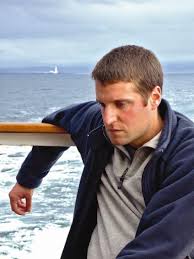
A great friend of mine who'd sailed across oceans several times once said, "Everyone gets seasick. We just have different thresholds." When someone says they've never been seasick, I always finish their sentence with "... yet!"
Seasickness is caused when the fluid in your inner ear tells your brain one thing (we are moving!) while your eyes tell your brain you are stationary (especially true if you are down below in the boat). The conflict creates nausea. When someone is seasick, the first order of business is to ensure their safety and that of the boat. Many times, the ailing person wants to go below and hang over the head, which is not the best idea because being down below can contribute to seasickness. Instead, get them up in the fresh air of the cockpit, wearing a life jacket (and life harness if you're offshore). The benefit of this is that you can keep an eye on the sick crew and still be aware of what's happening around you. Never let the victim heave over the side of the boat! If he or she were to fall overboard, that would turn a bad situation into a life-threatening one.
If possible, get the person to stand at the helm and steer. The action of being up and staring at the horizon, and having your brain and your eyes experience the same movement, helps alleviate the seasickness.
Signs Of Seasickness
Look for these giveaway signs, so you can help prepare or even prevent someone from becoming sick:
- Lack of hunger or thirst
- Going quiet or becoming lethargic (easy to spot with children)
- Sweating
- Dizziness
- Repeated swallowing
- Mouth watering
Seasickness Prevention
Don't be fooled. Even though most people suddenly feel better after being sick, many will become sick again within the hour if they don't take precautions. Over the years that we've lived aboard our boat with our children, we've come to better understand what causes seasickness and developed a wide range of options to fight it. Some options are simple and don't require any type of medication; others require a prescription from your physician and come with side effects. The key is to find the right combination for you and remember simple things you can do while on the water.
Peppermint. One of our favorites, especially for kids. Peppermint naturally calms the stomach. We keep candy canes on board. An extra benefit is that the action of sucking on the candy seems to take the victim's mind off the motion.
Ginger. Often considered one of the best ways to avoid being sick or to calm a stomach, ginger can be purchased in large-milligram quantities at many nutrition/drug stores. Or make ginger cookies. The carbonation of ginger ale can help, but we haven't found it to contain enough ginger to be effective.
Bonine/Dramamine. These may make you sleepy.
Wristbands for motion sickness. Some people swear by them. They're worth a try.